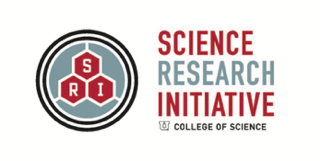With the urban population of Utah continuing to grow at one of the fastest paces in the United States, public lands in the state, which already comprise some of the most highly recreated areas in the country, will continue to see a growth in human influence. However, these lands also support a thriving wildlife community, with some of the most charismatic species representative of the American West calling Utah’s wild-urban interface home.
Wildlife Watch was designed to provide baseline data about local wildlife and habitat across this unique landscape. With these data, we are uncovering how humans alter the ways wildlife interact with their environment, focusing on how species may continue to persist in an everchanging matrix of wild and urban landscapes.
To do this, Sageland Collaborative has teamed up with the Human-Wildlife Coexistence Lab and the Science Research Initiative at the University of Utah, Salt Lake City’s Trails and Natural Lands, Utah’s Hogle Zoo, The United States Forest Service, and the Utah Division of Wildlife Resources to create the Wildlife Watch project. Teams of trained volunteer community scientists and experts venture into the Utah’s mountains and greenspaces across Salt Lake City to deploy trail cameras that are monitored regularly from June - August each year. They also analyze images captured by these cameras to help scientists map wildlife movement and behavior across a gradient of wild to urban landscapes, elucidating what it takes to make it in an ever-changing world.
Project leads Mary Pendergast and Austin Green document and set up a wildlife camera. Photo by Sarah Woodbury.
Wasatch Wildlife Watch kicked off in 2018 and is our most successful community science project to date! Last year over 100 dedicated volunteers collected and analyzed 100,000’s of trail camera images to help understand the Wasatch’s wildlife populations and movement corridors. Study sites are located along the Jordan River, to City Creek, and through the Cottonwood Canyons.
For more information on what community scientists do in the summer field season, review our 2024 Wildlife Watch Community Scientist Position Description.
Become a Community Scientist Volunteer
Summer Camera Volunteers
Signups are now open for the 2024 Wildlife Watch Team!
Please be sure to read our updated Community Scientist Position Description to ensure your availability matches the project requirements. Once you know you can participate, don't hesitate to sign up since spots are limited on this project and can fill up quickly!
Camera Trap Response Team
With all of the wildlife habitat spread across the state, it can be difficult to monitor and assess the effectiveness of active management strategies and initiatives. This is where Wildlife Watch can step in! We are inviting previous participants to join our new Camera Trap Response Team. This team of trained camera trap community scientists will travel to specific areas across the state and provide hands-on monitoring efforts for agency partners in need of wildlife data. These data will be gathered in advance of landscape planning initiatives, wildlife policies, and adaptive management strategies.
More details coming soon!
Image Analysis (All Seasons)
You can sign up to join our Image Analysis Team at any time during the season. For this part of the project, you’ll work remotely, from anywhere with computer and internet access. You’ll go through wildlife camera images and identify wildlife in the photos, processing the data into information that can be used for things like migration maps or habitat hotspot maps.
This can then be used by decision makers in planning. Future applications could include:
Making development plans that consider wildlife needs (e.g. avoiding a road through an key habitat)
Considering wildlife bridges and underpasses in areas where wildlife migration routes and roads intersect
Prioritizing certain crucial areas in conservation planning
Contributing to nationwide and international studies on human-wildlife interactions
Gather your friends, family, or coworkers and see who can analyze the most photos! Start by simply signing up to receive project updates.
Additional Image Analysis Resources
Step-by-Step Image Analysis Guide (PDF) - A document with steps to creating your account and getting started tagging wildlife
Video Guide for Tagging Wildlife (video) - Project lead Austin Green details how to tag wildlife on the project platform
Mammal Identification Reference (PDF) - A document with support for identifying wildlife in the region
Conserve local wildlife by donating today.
Field Season: For camera monitoring in the field, the season is April - August, with optional winter monitoring. You can volunteer to analyze wildlife images anytime.
Training Required? Yes. This year’s training will be held on Saturday, May 18, 2024 at the Crocker Science Center at the University of Utah from 1:30pm-3:30pm.
Volunteer Commitment Level:
Camera project: High commitment, requires a commitment to multiple days throughout the summer
Image analysis: Commitment flexible
Requirements:
Field season: Field work, hiking, vehicle, ability to be trained on use of trail camera operations and the Survey123 application.
Image analysis: Training and access to a computer with WiFi.
For further questions about requirements or site accessibility, please contact us.
Communications: We send updates to those on our project lists, so sign up for Image Analysis or the Wasatch Wildlife Watch field season to receive updates.
If you have any questions, please email project leads Austin Green (austin@sagelandcollaborative.org) or Mary Pendergast (mary@sagelandcollab.org).




















